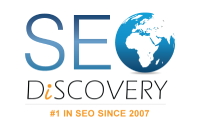PPC stands for pay-per-click, a model of internet marketing in which advertisers pay a fee each time one of their advertisements is clicked. Essentially, it is a way of purchasing visits to your site, rather than attempt to “earn” those visits organically.
Pay per click advertising is a vital element of a complete search engine optimization strategy since it brings in instant results. You can achieve lots of different goals with PPC, and several of the most common causes to use these advertisements includes identifying new leads, improving visibility, bringing more traffic to your site, and raising your conversions. In the end, however, the one reason that businesses use PPC is to grow. Whereas PPC is easy to execute, it does take some planning plus preparation, so today you’ll learn everything on how to craft an effective PPC marketing strategy.
Crafting the correct Strategy
An effective PPC marketing strategy needs time, effort, and expertise, but PPC tactic makes all the difference. The first step in the planning stage is pinpointing the targeted audience—who your viewers are and wherever they are in the purchasing cycle–and determining the goal of the paid search effort. Whether it is leads, sales, or conversions, the campaign goal must align with and support the organization’s general marketing strategy.
The next step is diving into who your competitor is and the keywords they are using. Depending on how many contestants are in the market, it might make sense to prioritize them somewhat than try to outrank all of them all at once. Do not assume competitors cornered the marketplace on all the finest keywords; use keyword tools to see if there are high-value terms additional marketers are neglecting (niche B2B acronyms plus model numbers are frequently overlooked). And be cautious to not cast too wide a net. As stated above, the B2B audiences are smaller as well as more focused than a B2C audience, thus making certain to fish where the fish are.
Once the audience, goal, and keywords are recognized and agreed upon it is time to establish key performance indicators (KPIs) as well as plug the goals into Google Analytics toward track the KPIs.
Finally, decide the budget allocation based on the preferred keywords, the anticipated CPC cost, and the prospective impressions and clicks estimated. Once the campaign launches, Google’s algorithm would monitor it for two to three weeks. Throughout this time the search engine is learning your keywords, keyword match type, and bidding to determine how you compare to others competing inside the same auction. From that point on, continue to optimize based on related metrics such as CPCs, CTRs, CPAs, conversion rates, impression share, and ROI to stay competitive inside the auction.
Understand your audience
Every PPC-related article on the internet would likely tell you that you require understanding your customer for your PPC campaigns to perform better.
However, in Digital Marketing knowing your audience goes outside demographics. You will need to essentially understand their shopping pattern, motivations, plus reservations before purchasing to craft the perfect PPC strategy.
Depending on your customer base, whether they’re B2B or B2C, these values would differ tremendously.
Create a PPC budget
The number one complaint that most advertisers have while it comes to setting up a paid search campaign is determining the budget. Yet, it is one of the most significant parts of your PPC marketing plan. We all have a promotion budget, so you require determining where paid search fits into this. You constantly want to be doing a mix of promotion tactics, especially at the start, to ensure that you are finding your target audience no matter wherever they live on the web.
Based on all of this, determine if you could feasibly do the recommended budget. If not, then you may want to go back to those niche keywords otherwise audiences thus you can create a more practical budget.
Analyze competitive landscape
Analyzing the competitive scenery teaches you who your main paid search competitor is, what they are doing that makes them booming, and how aggressive your campaign must be to compete.
If you are not sure who your competitor is, use Alexa’s Audience Overlap tool to recognize sites competing for your audience. You could then jump to the Competitor Keyword Matrix to see both organic as well as paid keywords from up to 10 of these contestants. Export these competitor keywords as well as prioritize them based on how well they are performing for the competition.
Research keywords
All searches, whether paid otherwise organic, start with words typed into a search box. That makes user-centric keyword research the foundation of any successful PPC marketing strategy.
You must already have lists of contestant keywords from the previous step. That is a good start, but it is not the only way to discover PPC keywords. Start analog, brainstorm broad keyword terms around product features otherwise verticals. A fashion eCommerce site may start with the extensive-term “women’s shoes,” for instance. You can then use tools like Alexa’s Keyword Difficulty tool to make out this head term with connected keywords.
If your site has a search function, export the entire search from the last 90 days, and then classify them by type. This is a verbatim list of what people search for one time they are on your site; it is worth considering these terms in paid advertising campaigns if you have content otherwise can create content that fills the search intent.
Define your account structure
Now you are ready to start executing the paid search tactic. To set up your Google account, you’ll require defining your Campaigns plus Ad Groups. Most accounts would have a few broad campaigns, plus a set of a few advertisement Groups inside those campaigns. You will set your budget at the campaign-level, and you will determine your keywords at the advertisement group-level.
To describe your Campaigns, start by looking over the terms you have identified from your keywords research plus by identifying the action you want users to take while they click to your site from those terms. For instance, if you sell men’s clothing, you may create a campaign for jackets, as well as the goal of the campaign, might be to get searchers in search of men’s jackets to come to your site as well as make a purchase.
Build PPC landing pages optimized for conversion
Your ads must take searchers to specially created landing pages. The closer the match between landing page content plus search intent the upper the conversion rate. If you just send all searchers toward a generic page, say, your home page they will feel frustrated and bounce. This would negatively affect the Quality Score, meaning the ad would have a lower chance of showing up in searches.
Identify Negative Keywords
You cannot just set your paid search policy to autopilot once you are done with the execution stage; a flourishing Google Ads strategy has steady tweaking built into it. That is what we call the Optimization Phase.
Start by identifying useless keywords using the Google ad Search Terms report. Search for keywords that explain high impressions however low CTR. Consider tagging each as a negative keyword—that just means your advertisement will not show up while people search that keyword. Through cutting out negative keywords you will focus your budget on the higher-performing keywords plus have a better chance of rising CTR, which in turn would help increase Quality Score.
Now is furthermore a good time to limit any campaigns you have running on a broad match. Broad match means your ad will appear on pertinent variations of your keywords, even if they are not in your keyword lists. This is a great method to start a campaign; however, running broad matches for too long could waste ad dollars. Focus on the terms that are showing a high conversion rate, as well as restrict them to phrase match otherwise even exact match type.
Increase ROI
Return on investment for paid search is determined through the goals of your paid search campaign, similar to cost per click otherwise cost per conversion. Optimizing paid search ROI means paying less as well as getting similar (or better) results.
Over the short plus medium term, improve campaign ROI by distributing your budget better. You could do this by ruthlessly abandoning low-performing keywords, along with reallocating budget to high-performing advertisement groups.
Long term, work on raising your Quality Score. This could involve improving the landing page experience, writing more persuasive ad text, or writing ads that more strongly match the intent of the user. Upper-quality scores mean the cash you spend on the ad will go farther, which will go a long way in the direction of optimizing ROI.
Measure and Report
Measurement as well as reporting must be baked into paid search policy. If you don’t plan measurement actions, reporting would fall by the wayside.
How you report on ad performance depends on the objective of your PPC strategy. That said, you will find most of the info you need in Google Ads reports. Several of the basic reports are as follows:
Auction Insights: Compares you to the competitor. Use this report to plan strategic activities.
Search Terms: show you which terms are getting clicks. Use this report to spot negative keywords as well as identify keywords for a precise match.
Campaign Performance: Shows performance on the campaign level. Use this report to get a bird’s-eye view of performance over time.
Ad Performance: explain how each of your ads is performing. Use this report to find themes around ad copy as well as calls to action.
If you report paid search results monthly, comprise increases and decreases month over month, in addition to the context around those changes. For example, if conversions rose owing to seasonality, that must go in the report. Finish up with the estimated impact on long-term goals, plus determine what actions you’ll do next month to construct on (or improve) present results.
Play the Long Game
B2B sales cycles are longer than the B2C sales cycle, so it is critical to monitor your site plus analytics and optimize as data becomes available. Visitors are not necessarily going to hit a “Buy Now” button for high-dollar technology products plus services. It’s significant that you build a retargeting campaign into your digital advertising programs to stay in front of the client with high-value, pertinent content, and offers all over the buyer journey. As you continue to promote, your contacts will return to your site for more info. Be sure to build devoted landing pages with forms to capture email addresses plus build a nurture campaign with other engagement opportunities to accompany the paid search campaign.
Pay-per-click advertising is more intricate for B2B than B2C, however with the right approach; it is both effective and efficient. For utmost effectiveness, it is best to rely on PPC agency to guide targeting, keywords, along ad development. If your business doesn’t have the luxury of internal PPC expertise—few do—contact Experts for a free digital audit. We bring widespread pay-per-click experience toward B2B tech marketers and could craft your next campaign base on your exclusive business requirements.
A Strong PPC Strategy Equals Better Results
It’s easy to get caught up in the enthusiasm of bidding and forget to apply tactical thinking to pay-per-click marketing. Take a step back, plus invest the time in building solid basics for paid ads.
Focus on execution as well as optimization activities that are firmly aligned to considered goals. Remember that booming PPC trends has testing plus tweaking baked into them from day one. This will make sure that you can pinpoint which activities drive profits and which are costing you cash. Your wallet would thank you.



Add a Comment